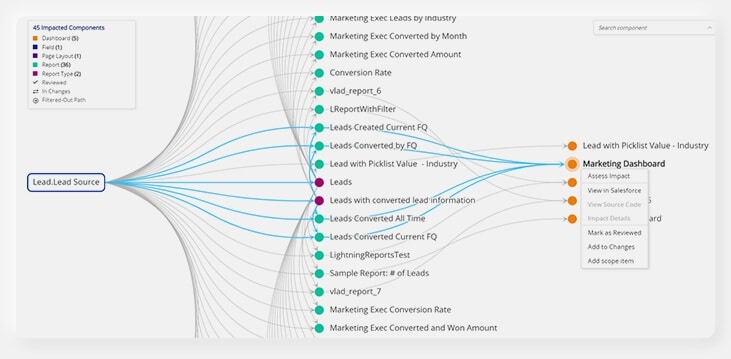Table of Content
What Does Data Quality Mean in Salesforce?
If you work with data, you may have come across the term – data quality. So, let me ask you – what is data quality? Why is it vital for your success? And what does it mean specifically in the Salesforce ecosystem?
Data quality indicates how reliable a given dataset is. The quality of your data will affect your ability to make accurate and informed decisions, based on the data. In Salesforce, good data quality exists when the data is accurate, up to date, easily accessible and when it is aligned with its intended use for Salesforce users, decision-makers, downstream applications, and processes. This article will discuss how to build a data pipeline that creates and sustains good data quality from the outset.
The Importance of Data Quality
Before moving ahead, let’s first have a look at some surprising statistics about data quality:
- A study by Experian found that as many as 94% of organizations suspect that their customers’ and prospects’ data may be inaccurate.
- Research from the Data Warehouse Institute maintains that data quality problems costs U.S. businesses more than $600 billion per year.
The above figures are staggering indeed! But what exactly does it mean for you?
In a world where business decisions are based on data, the task of keeping your data accurate and up to date is more critical than ever. Inaccurate data may lead to wrong decisions and the business teams will not have the right tools to convert prospects to customers. This can easily result in:
- Missing out on opportunities and revenues
- Frustrated users and customers
- Lack of user adoption
We all have to admit, accurate data and reports are the backbone of all organizations.
Key Characteristics of Data Quality
We all know that what cannot be measured, cannot be managed, controlled, or improved!
But how do you measure the data quality of an organization? As is almost always the case, there is no ‘one size fits all’ approach to measuring data quality.
However, there are a few common ways to measure data quality. The following list is a good place to start:
- Accuracy: Data must be described correctly and accurately.
- Completeness: Data must not have any missing values.
- Integrity: Data must be correctly mapped with related tables. For example, customer Account and transaction tables.
- Consistency: Data must be represented in the same way within/across an organization.
- Validity: Data must align accurately with its intended purpose.
- Timeliness: Data must be up-to-date.
So how do we Improve Data Quality?
So, let’s see how we can avoid the fate of companies wrestling with lack of data quality and data integrity issues.
First and foremost, we have to be clear on one thing – data quality is not something that can be fundamentally improved by finding problems and then fixing them. As a result, organizations must start by producing good quality data from the get-go.
Here is a step by step guide to help you maintain good quality data in your Salesforce Org:
- Map the data – Improving data quality starts with understanding the customer lifecycle (or business processes). Mapping data against the different stages of the customer’s lifecycle helps you to determine what quality issues you may be facing and what fixes may be appropriate.
- Evaluate, document and analyze – Understand which business units need which fields and for what purpose? When you identify which groups need access to the data how the data will be used, audit and document the data flow with the read/write access: who creates the data, who needs read access, how the data gets updated or deleted etc.
- Identify gaps in the data – Proactively look for potential problems with the data and ask yourself the following questions:
- Is there data that is spotty or missing in the database?
- Are there unused fields?
- Are there duplicate fields or values?
- Learn the impact of changes before implementation – Once you have identified data quality problems, do not rush to delete fields or objects before you understand their impact on your current implementation. Panaya’s ForeSight can help you to identify all of the Salesforce components that either impact or, are impacted by changes to other components

5. Create KPI metrics for measuring the data’s quality – Create reports and dashboards to help you ensure data quality in the long run. For example, make sure that the number of hard bounces or spam complaints doesn’t increase over time. See our list of top 8 software testing KPIs recommended to add to your quality scorecard.
Conclusion
Always keep in mind – improving data quality is a long-term process. The amount of effort needed to improve data quality is far from glamorous! But, in the long run, continuous attention to maintaining high standards of data quality will pay off! It will help executives make better decisions, the business team achieve better outcomes, and it will let you focus on driving leadership and innovation in Salesforce, instead of struggling with data problems.
